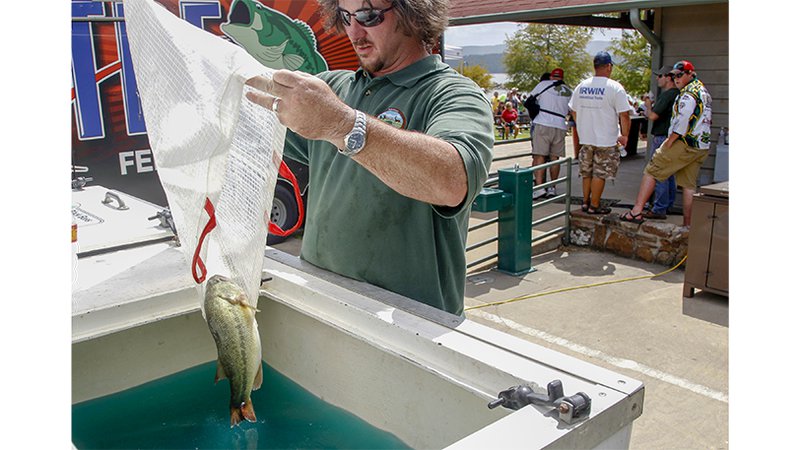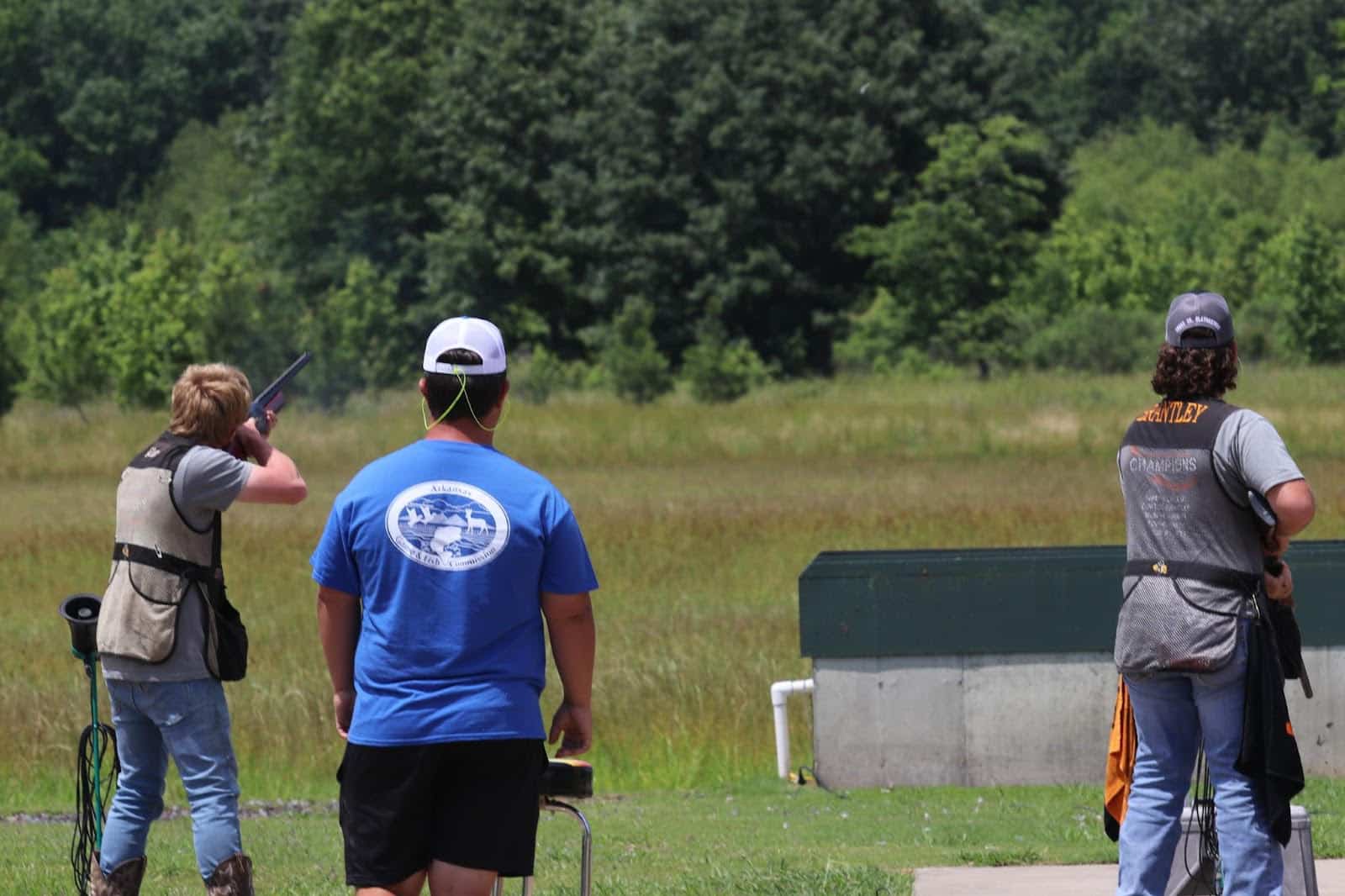Anglers, biologists work hard to keep bass at Forrest Wood Cup healthy
ON 08-08-2018

Aug. 8, 2018
Randy Zellers
Assistant Chief of Communications
HOT SPRINGS – Fifty-six of the best bass anglers in the world will be showing off their catch and talking to huge crowds at this weekend’s Forrest Wood Cup in Bank of the Ozarks Arena in Hot Springs, but biologists and tournament officials will be scrambling to take care of the true stars of the show, the largemouth and spotted bass to be displayed during the event’s weigh-ins at 5 p.m. Friday-Sunday.
Summer is one of the most stressful times for fish. The heat forces many to find refuge in deeper water, where more oxygen can be found. Low oxygen levels in hot water and the stress of being pulled up from the depths can cause fish to struggle and die if not cared for properly.
Ideally summer tournaments should be avoided by anglers concerned about fish mortality through catch-and-release fishing. However, the small field of 56 anglers participating in the Cup and the extreme measures both anglers and biologists take to care for these fish minimize the tournament’s impact.
Bill Taylor, senior director of tournament operations with FLW, says fish care is paramount to this event.
“I’ll constantly be reminding the anglers about high temperatures and to take care of those fish,” Taylor said. “Fish care begins with the anglers, and these men know it. If one of their fish dies they receive a penalty at weigh-in. One dead fish could cost them the win and some substantial money.”
Taylor says all anglers will be encouraged to keep ice on hand to keep their livewells cool, and will be asked to put fresh water in their livewells before loading their boats to head to the weigh-in. Additional ice will be available at the boat ramps to care for the fish as well.
“They’ll travel straight to the arena, where we have a large aerated and oxygenated holding tank to keep the fish while they’re waiting to be weighed,” Taylor said. “They’ll only be out of water for a minute to be weighed on stage, then we have some high school angler volunteers that will take them to tanks manned by the AGFC for observation and release.”
From there, biologists with the AGFC’s Black Bass Program place the fish in a special release truck filled with cool, oxygenated water.
“We treat the water with a powder additive that helps rebuild their slime coat if there was any damage,” said Jeff Buckingham, assistant Black Bass Program coordinator for the AGFC. “The additive also adds a little color to the water, which, combined with keeping the lids closed and the inside of the tank dark, calms the fish down a bit to relieve stress.”
Buckingham says the fish are returned to Lake Ouachita as soon as each day’s weigh-in is concluded to minimize any mortality.
“We return them to various boat ramps with suitable habitat nearby,” Buckingham said. “We try to spread them out to less popular ramps, which already receive many transplanted fish from other tournaments on the lake throughout the year.”
Buckingham says there are many things anglers can do to help each fish’s chance of survival during summer tournaments. Here are a few tips for all anglers wishing to keep their catch alive, courtesy of the AGFC’s Black Bass Program:
- Land fish as quickly as possible.
- Do not let fish flop on any surfaces or hold them in a way to damage their slime coat.
- Keep fish out of the water only as long as you can hold your breath.
- Exchange at least half of the water in your livewell with fresh water from the lake every four hours to purge waste and nitrogen.
- Add ⅓ cup of non-iodized salt for every 5 gallons of water in the livewell or use a branded livewell treatment.
- Keep the livewell full and running constantly.
- When the water temperature is 80 degrees or above, add one 8-pound block or bag of ice every four hours to the livewell.
“These tips are best when you try to follow all of them,” Buckingham warns. “Just because you put an additive in the water doesn’t mean the fish will survive. Keeping that water cool with ice is one of the most important ways to help because cooler water will hold more oxygen than warm water.”
One tip Buckingham gives all anglers about icing their livewells is to use the recirculate feature on their aerator while the ice is in the well, and pump fresh water from the lake once it has melted.
“If you keep pumping fresh water on your ice, it’s not going to last as long,” Buckingham said. “But you need to exchange water between loads of ice to get rid of waste and keep that water fresh.”
The AGFC Fisheries Division also has developed a video to illustrate how anglers can “fizz” their fish if they are pulled from too deep and cannot right themselves due to swollen swim bladders. It is available at www.gettinfizzywithit.com.
For more information about the AGFC’s Black Bass Program, visit www.agfc.com/bbp.
For information on this week’s Forrest Wood Cup, and the largest fishing expo in Arkansas, visit www.flwfishing.com/forrestwoodcup.
Recent News
Subscribe to Our Weekly Newsletter E-mails
Don’t miss another issue. Sign up now to receive the AGFC Wildlife Weekly Newsletter in your mailbox every Wednesday afternoon (Waterfowl Reports are published weekly during waterfowl season and periodically outside the season). Fishing Reports arrive on Thursdays. Fill in the following fields and hit submit. Thanks, and welcome!


